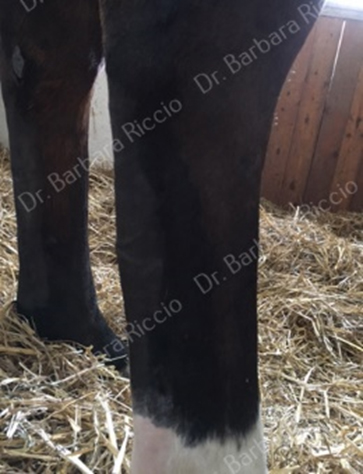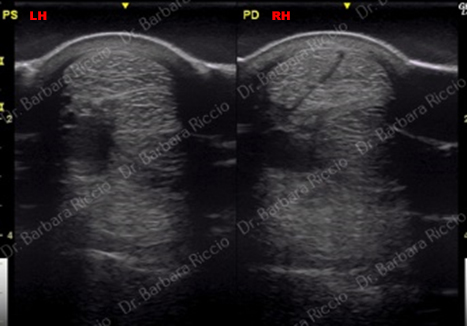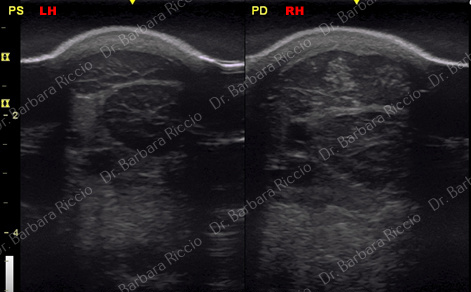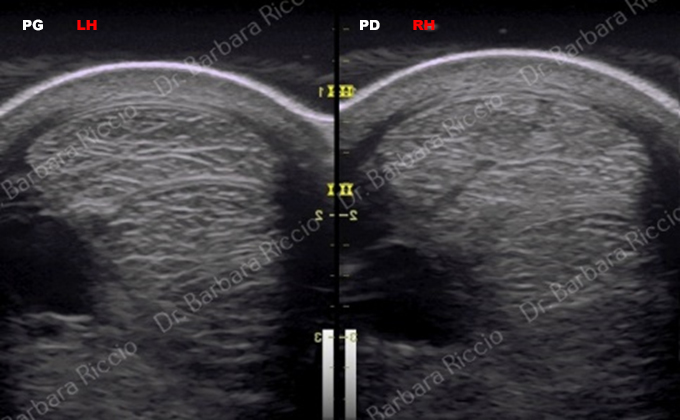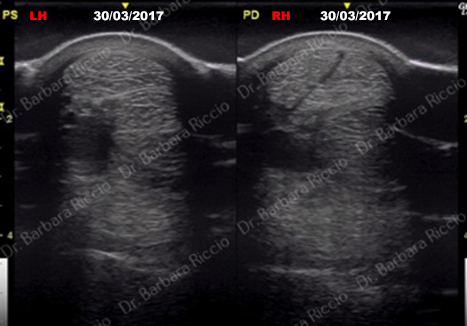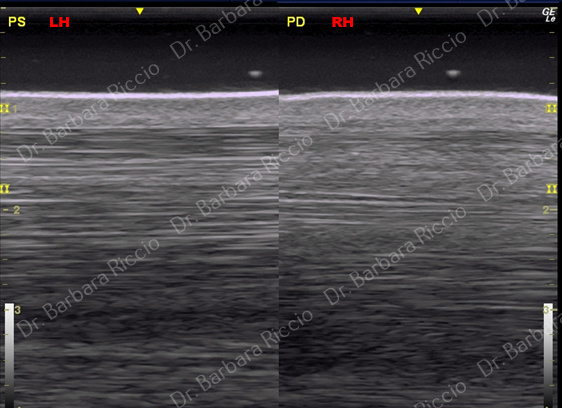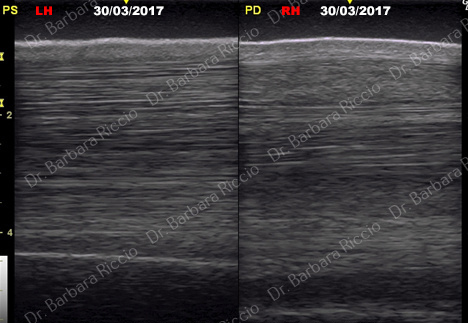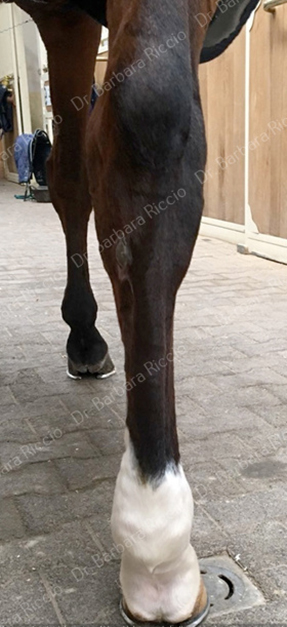Barbara Riccio
DVM, PhD, ISELP cert, DACVSMR, DECVSMR
16th WEVA Congress – Verona, Italy – October 3-5, 2019



2003 Dressage Holsteiner Gelding
- History: chronic (more than 1 year old) tendinopathy at the right hindlimb superficial digital flexor tendon (RH SDFT)
- Poor performance and mild RH lameness
- Degree of RH lameness increased after last competition (March 19, 2017)
- Competition level: St. George – Intermédiaire

1st examination March 30, 2017 : diagnosis and management
- Recurrence of RH SDFT tendinopathy
- Hospitalization 1 month in box with small paddock
- Walker: 30 minutes twice/day
- Shoes: aluminium large toe and narrow branches
- 10 low frequency ultrasound therapy treatments (3 per week for 2 weeks, then 2 per week for 2 weeks)

- Clinically, RH SDFT appears less swollen and painful
- Improvement also on ultrasound examination: the anechogenic tendon split is now less visible
- Horse goes back home with a 4 months rehabilitation program. Same orthopedic shoes
- Re-check every month
- Good clinical and US improvement
- Decrease size of SDFT
- Painless at palpation
- Progressive increased level of training
- 1st competition: August 26 2017 (2nd place) only 5 months after RH SDFT tendinopathy recurrence
Ultrasound examination December 1, 2017
